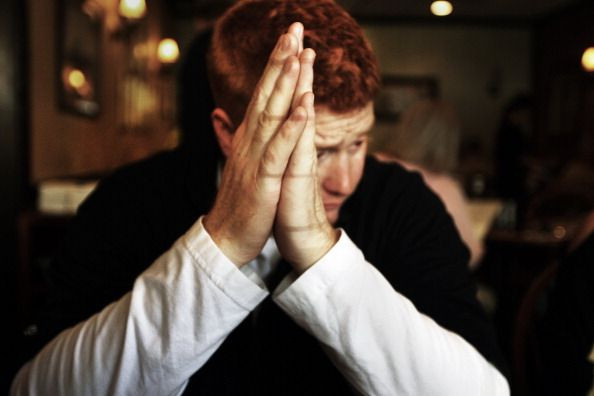PTSD Treatment: Researchers Test Stellate Ganglion Block For Effectiveness

The United States Armed Forces continue to be torn apart by a high rate of military veteran suicides.
An average of 20 veterans a day dies from suicide, or more than 6,000 men and women every year, according to the U.S. Department of Veterans Affairs (VA). Most of these unfortunate heroes suffered from PTSD or post-traumatic stress disorder when they decided to end their lives.
PTSD is a mental disorder that can develop after a person is exposed to a traumatic event such as warfare, sexual assault, or other threats on a person's life. A person with PTSD is at a higher risk for suicide and intentional self-harm, which is the case with U.S. military veterans.
There’s a good reason for this.
“Combat veterans are not only more likely to have suicidal ideation, often associated with posttraumatic stress disorder (PTSD) and depression, but they are more likely to act on a suicidal plan,” said a PTSD study published in the Cleveland Clinic Journal of Medicine.
“Especially since veterans may be less likely to seek help from a mental health professional, non-mental health physicians are in a key position to screen for PTSD, depression, and suicidal ideation in these patients.”
Helping save what remains of the country’s dwindling veteran population has become a priority of both the military and medical communities. A key target of their efforts is mitigating PTSD, the most common trigger for veteran suicides.
The newest weapon in the fight against PTSD and to treat PTSD in veterans is a procedure called stellate ganglion block or SGB.
During a stellate ganglion block, pain-relieving medicine is injected to the region of the stellate ganglion in the front of the neck. This injection serves to reduce the release of norepinepherine that activates pain sensitive nerves, thereby limiting the pain.
Medical researchers have pointed to the increase of norepinephrine in the brain as a main mechanism of PTSD. They said that since SGB downregulates norepinepherine, there will be decrease in symptoms of PTSD.
SGB involves numbing a patient’s neck and using ultrasound to guide a needle toward the stellate ganglion, which is the bundle of nerves in the front of the neck that controls the body’s fight-or-flight response. The doctor injects medication into the area to temporarily block those nerves.
Some doctors are confident that if SGB becomes an accepted and common treatment for PTSD, there will be a massive and positive impact on the mental health of veterans when they integrate back into civilian life.
Research has identiified the increase of norepinephrine in the brain as a main mechanism of PTSD. Trauma, such as combat, stimulates the release of norepinephrine. This, in turn, triggers arousal and encodes fear memories.
When those nerves become sensitized to react more readily, a veteran suffers from more norepinephrine surges. More fear is now encoded into the veteran’s nervous system. This renders him more vulnerable to PTSD and suicide.



























